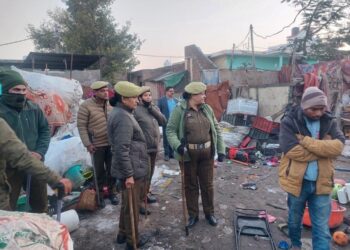Despite their failure to break the impasse, the Pakistani and Indian foreign secretaries, Aizaz Chaudhry and S. Jaishankar, had what were called frank and constructive talks in New Delhi on April 26.
This only brings home the harm which the practice of stipulating conditions for talks inflicts on relations between Pakistan and India. These talks were in the time-honored tradition of a bilateral meeting held on the sidelines of a multilateral conference; this time the Heart of Asia conference.
The hideous jargon that has become the staple of discourse in South Asian diplomacy is of a piece with the immature sulk that characterizes that diplomacy. The annual session of the UN General Assembly, the Saarc summit and similar multilateral jamborees provide convenient occasions for bilateral exchanges without loss of face.
The Comprehensive Bilateral Dialogue is in deep freeze despite the announcement of its resumption by the foreign ministers in Islamabad last December. Indias grievances on the terrorist attack on the Pathankot air base are valid. Their gravity cannot be exaggerated. India was perfectly justified in raising the issue at the talks. What is ill-advised is making resolution of such issues a precondition to the talks.
It is time to give a thought to the utter wastefulness of diplomacy by sulk. Stand-offs do not last; they only invite American pressures for resumption of talks, which neither India nor Pakistan can resist for long.
Countries interact with each other at different levels. There are layers of interaction diplomatic, trade, cultural people-to-people intellectual, intelligence and military; ranging all the way from the public to covert contacts.
A meeting between the two nations army chiefs would itself be a CBM.
No two countries have more in common with each other than India and Pakistan. No two countries communicate less. Our relationship is, for historical reasons, unique; sui generis. The choice is stark; we either drift along, as we have been doing since Partition, or break from that sorry past in a controlled calculated manner. That means that the disputes and disagreement are left to the governments to tackle and resolve by the diplomatic process with inputs from the media and academia.
But the diplomatic process is but one layer of the interaction. There is a host of others in democratic countries. These must be left free to interact with each other.
That a galaxy of former high commissioners of India and Pakistan met in New Delhi this past week is a welcome sign. Each side had its rich mix of doves, hawks and jays. Time there was when India refused to allow even Pugwash conferences to be held on its soil. Who gained by such petulance? Early in February, the director general of Pakistans Inter-Services Intelligence, Lt Gen Rizwan Akhtar met the head of Afghanistans National Directorate of Security, Masoud Andrabi, in Islamabad.
Around the same time the Afghan military operations chief held security and border management talks with his Pakistani counterpart at GHQ in Rawalpindi.
The national security advisers of India and Pakistan are known to have hit it off so well at their famous meeting in Bangkok and reportedly have since continued to remain in touch discreetly.
A former head of Indias external intelligence agency, RAW, Amar Singh Dulat, said recently: I have been pleading for agency to agency interaction at the RAW and ISI level. Its important for the intelligence chiefs to be in contact.
He said: It has happened from time to time, but it has not been institutionalised, which it should be. It is a confidence-building measure (CBM). If we are talking
engagement then this is an important CBM. That the intelligence chiefs are talking gives confidence to both sides and to the outside world too.
In the worst days of the Cold War, the KGB and the Central Intelligence Agency never stopped talking and that eased a lot of things. Whenever the temperature rose, it is these kind of things that bailed people out.
These considerations apply with yet greater force to a dialogue between the army chiefs of India and Pakistan. They will have a lot to talk about.
Pakistan is concerned about the implications of Indias Cold Start Doctrine; India with the induction of tactical nuclear weapons in Pakistans armoury for battle. It would be wise to initiate it at two levels below the chiefs together with their respective official spokesmen, the DG ISPR (the Pakistani militarys media wing) and his Indian counterpart.
It can move to the level of deputy chiefs and eventually to a meeting of the army chiefs themselves. Pathankot will be easier to tackle.
It is impossible to exaggerate the advantages which interaction between the two armies will ensure. It will be a CBM in itself. More, it will provide a boost to the diplomatic process. That would be conducted no longer on the sidelines of multilateral conferences.
Follow this link to join our WhatsApp group: Join Now
Be Part of Quality Journalism |
Quality journalism takes a lot of time, money and hard work to produce and despite all the hardships we still do it. Our reporters and editors are working overtime in Kashmir and beyond to cover what you care about, break big stories, and expose injustices that can change lives. Today more people are reading Kashmir Observer than ever, but only a handful are paying while advertising revenues are falling fast. |
| ACT NOW |
| MONTHLY | Rs 100 | |
| YEARLY | Rs 1000 | |
| LIFETIME | Rs 10000 | |








